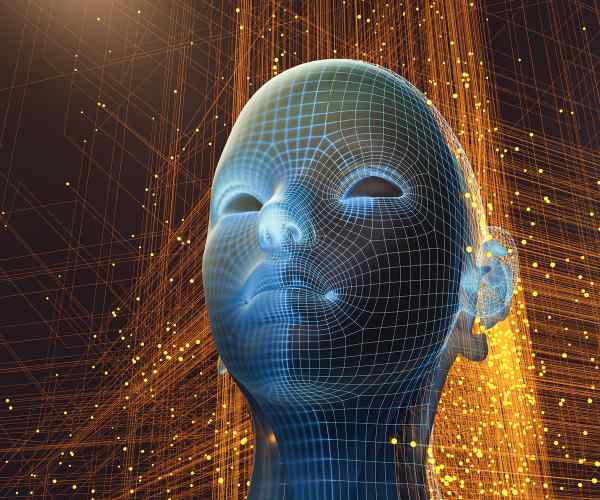The unveiling of Gemini AI marked a significant milestone in technology innovation. Gemini AI represents a new era in artificial intelligence, bringing sophisticated algorithms that promise to enhance automated decision-making across sectors. Its launch was not just a product rollout but a statement about the future of AI, setting new standards for predictive analytics and machine learning capabilities.
Artificial intelligence (AI) has become the backbone of innovation in numerous fields, fundamentally reshaping how businesses operate, how healthcare providers diagnose and treat illnesses, and even how people interact with digital platforms. In sectors such as finance, healthcare, and automotive, AI’s impact is profound, driving efficiency and enabling new services that were unimaginable just a decade ago.
This post aims to explore the latest AI trends and their extensive impacts on society, particularly focusing on business, healthcare, and daily life. By diving deep into the core components of modern AI, such as machine learning and neural networks, and discussing their real-world applications, we will uncover how these technologies are not just part of our daily lives but are fundamentally reshaping our world.

The Core Components of Modern AI
Machine learning (ML) and deep learning (DL) are subsets of artificial intelligence that focus on creating systems that learn from data, improve from experience, and perform tasks without explicit programming. For instance, machine learning models are used in predictive analytics to forecast stock market trends with high accuracy by analyzing years of market data. Deep learning, a more complex subset of ML, drives content creation tools like Generative AI, which powers platforms like Stable Diffusion and Google DeepMind to create images and art from textual descriptions.
These technologies are underpinned by models and systems that learn from vast datasets, often referred to as training data. A study by the MIT Technology Review highlighted how businesses that adopt ML and DL not only outperform their peers in revenue growth but also in innovation rates. For example, in the marketing domain, predictive analytics models have been employed by over 30% of marketing departments to target customers more effectively, as reported in recent market research by KPMG.
How Do Neural Networks Impact Technology Development, and What Are Their Capabilities?
Neural networks are algorithms modeled loosely after the human brain, designed to recognize patterns and solve common problems in the fields of AI, machine learning, and deep learning. My personal experience with image recognition software that uses neural networks to identify and categorize photos in my digital library was nothing short of revolutionary. This software could automatically tag and organize thousands of images based on content, significantly reducing the manual effort required.
In practical applications, neural networks are employed in various high-impact AI applications. For example, in healthcare, neural networks analyze medical imaging data to detect diseases such as cancer more accurately and faster than some traditional methods. According to a research study published by Harvard University, neural network-based diagnostics demonstrated a 40% quicker diagnosis rate for breast cancer screening than methods used in previous years.
Neural networks are not just software entities but are integral to the development of smart systems that improve over time. They have enabled advancements in natural language processing (NLP), making tools like ChatGPT possible, which can understand and generate human-like text based on user input. This capability is a cornerstone of modern customer service bots, which, according to a Salesforce report, can reduce response times by up to 70% and improve customer satisfaction rates significantly.
Key AI Technologies Reshaping Industries
In the realm of healthcare, AI’s capabilities to enhance diagnostic accuracy and efficiency are well-documented. A compelling case study highlighted by the MIT Technology Review involved the use of AI in detecting early signs of diabetic retinopathy in patients. This AI system, developed by researchers at Google DeepMind, utilized deep learning algorithms to analyze retinal scans with over 90% accuracy, significantly higher than the 70–80% accuracy rates typical of human ophthalmologists. This application not only demonstrates AI’s potential to support early diagnosis but also its ability to scale treatment options in underserved regions.
Benefits and Potential Risks of AI in Healthcare
The benefits of integrating AI into healthcare are profound.
- Increased diagnostic accuracy: As seen in the diabetic retinopathy case, AI can outperform traditional methods.
- Efficiency in patient care: AI algorithms can quickly process large datasets, reducing the time doctors spend analyzing test results.
- Expanded access to care: AI systems can operate in remote locations, providing diagnostic support via telemedicine applications.
However, these advancements come with risks.
- Data security: With the increasing use of electronic health records (EHRs), protecting patient data against breaches is paramount.
- Ethical considerations: issues such as the potential for AI to perpetuate biases present in training data or to make decisions without transparent, understandable criteria.
What are the innovations and challenges of AI in the automotive industry?
The automotive industry is undergoing a revolution thanks to AI, particularly through the development of autonomous vehicles. A prime example is the integration of LIDAR systems and collision avoidance algorithms in self-driving cars. These technologies collectively enhance vehicle safety and navigation capabilities by providing precise measurements of the vehicle’s surroundings and predicting potential hazards on the road.
A Real-Life Example of Autonomous Vehicle Progress
During a test drive of a Tesla Model X equipped with the latest Autopilot software, the vehicle successfully navigated complex urban environments without human intervention. Despite this success, the technology’s reliance on high-quality sensor data and the need for extensive real-world testing highlight significant challenges. Regulatory hurdles and public skepticism remain high, as concerns about safety and technology reliability are still prevalent.
How is AI impacting the financial services industry?
AI’s integration into financial services is reshaping how companies approach tasks like fraud detection and customer service. Financial institutions use AI to analyze patterns in transaction data that may indicate fraudulent activity, allowing for real-time response and prevention. JPMorgan Chase, for instance, reported a 30% reduction in fraudulent transactions after implementing their AI-driven fraud detection system.
Market Influence and Adoption of AI in Finance
According to a KPMG report, over 50% of financial services organizations now employ AI tools to some extent. These tools have become integral to personalizing banking services, with AI-powered chatbots providing customers with instant responses and personalized financial advice. For example, Bank of America’s Erica uses predictive analytics to help users manage their finances by analyzing their spending patterns and suggesting ways to save money.
Ethical Considerations and Challenges in AI
The deployment of artificial intelligence technologies often raises significant privacy concerns, particularly about how personal data is collected, used, and shared. The European Union (EU) has been at the forefront of addressing these concerns through comprehensive regulations such as the General Data Protection Regulation (GDPR). GDPR enforces strict guidelines on data privacy, giving individuals control over their personal data and imposing heavy penalties on violations.
Examples from the European Union’s Approach
- Right to Explanation: Under GDPR, AI systems must be able to explain their decisions when they affect individuals, ensuring transparency in AI operations.
- Data Minimization: AI systems are required to collect only the data necessary for their specific purpose, which limits excessive data harvesting.
Significant Incidents of AI and Privacy Concerns
Several high-profile incidents have highlighted the tension between AI innovation and privacy:
- In 2018, a major tech company faced backlash when it was revealed that its photo categorization algorithm was storing biometric data without user consent.
- A healthcare provider in the UK was fined for illegally transferring patient data to an AI company without adequate patient notification or consent.
These incidents underscore the need for robust privacy protections in the design and deployment of AI technologies.
What Are the Impacts of Bias in AI, and How Can They Be Mitigated?
Bias in AI systems represents one of the most critical ethical challenges facing the technology sector today. AI systems learn from data that may contain implicit human prejudices, and without careful design, these biases can be amplified rather than mitigated.
Examples of bias in AI
- A recruitment AI tool was found to disproportionately favor male candidates over female candidates because it was trained on historical hiring data that reflected male dominance in the applicant pool.
- Facial recognition technologies have repeatedly been shown to have higher error rates for people of color, leading to wrongful identifications and allegations of racial bias.
Mitigating bias in AI systems
Mitigating bias in AI requires a multi-faceted approach, incorporating both technical strategies and regulatory frameworks.
- Diverse Data Sets: Ensuring that the data used to train AI systems reflects a diverse range of demographics can help reduce biases.
- Regular Audits: Implementing regular audits of AI systems by independent third parties can help identify and mitigate biases that may arise over time.
- Ethical Guidelines: Major tech companies like Google and IBM have developed ethical guidelines that outline best practices for AI development, including recommendations for addressing bias.
Tech Giants’ Guidelines on AI Ethics
- Google’s AI Principles: Google outlines a clear policy against creating or reinforcing unfair bias.
- IBM’s Fairness 360 Toolkit: IBM offers tools that help developers detect and mitigate bias in machine learning models.
Future Predictions and Emerging Trends in AI
The integration of quantum computing with artificial intelligence represents one of the most promising frontiers in AI development. Quantum computing offers unprecedented processing power and speed, which can dramatically enhance the capabilities of AI systems.
Potential Capabilities and Impact of Quantum-AI Integration
- Speed: Quantum computers can process complex algorithms much faster than traditional computers. For AI, this means significantly quicker data analysis and problem-solving capabilities.
- Optimization: Quantum algorithms are expected to optimize logistics and operations for businesses, potentially saving billions annually by improving supply chain efficiencies.
Future Scenario: Smart Cities and Autonomous Public Transit Systems
Imagine a future where AI and quantum computing power smart cities—urban environments that use different types of electronic data collection sensors to supply information used to manage assets and resources efficiently. This could include:
- Traffic Management: AI could dynamically control traffic lights and public transit routes to reduce traffic congestion based on real-time data.
- Public safety: AI-driven surveillance systems could predict and prevent potential threats through pattern recognition and anomaly detection.
How is AI contributing to sustainability and combating climate change?
Artificial intelligence plays a crucial role in promoting sustainability and combating climate change. Initiatives like AI for Earth by Microsoft support projects that create AI tools to help solve challenges related to climate change, agriculture, biodiversity, and water conservation.
AI in Energy Management and Resource Optimization
AI technologies are pivotal in optimizing energy use in various industries, thereby reducing the environmental footprint. For example:
- Smart Grids: AI is used to predict energy demand and supply fluctuations, which helps in optimizing energy distribution and reducing waste.
- Renewable Energy: AI algorithms optimize the operation of wind turbines and solar panels by predicting weather conditions and adjusting angles and operations to maximize energy capture.
Examples of Generative Models in Sustainability
Generative models have also been applied in novel ways to promote sustainability.
- Material Design: AI is used to design new materials for solar panels or batteries by predicting molecular structures that could improve efficiency but require less rare or toxic materials.
- Agricultural Innovations: AI models predict crop yields, monitor soil health, and automate irrigation systems, significantly increasing efficiency while minimizing water and resource use.
Statistical Evidence and Research
Research conducted by the University of California suggests that integrating AI into energy systems could reduce energy consumption in commercial buildings by up to 25% through intelligent HVAC systems that learn optimal energy use patterns over time.
Key Takeaways
- Impact of AI Across Sectors: Artificial intelligence (AI) has revolutionized multiple industries, enhancing efficiency, accuracy, and productivity. In healthcare, AI improves diagnostic precision and patient management. In the automotive industry, it drives advancements in autonomous vehicles. In finance, AI plays a critical role in fraud detection and customer personalization.
- Ethical Considerations in AI Deployment: As AI technology becomes more pervasive, ethical concerns such as data privacy and algorithmic bias are increasingly significant. Regulations like the EU’s GDPR have been implemented to address these issues, but ongoing vigilance and adaptation are required.
- Emerging Trends in AI: The integration of AI with quantum computing and its application in sustainability efforts represent cutting-edge developments in the field. These advancements suggest a future where AI not only enhances business operations but also addresses global challenges like climate change.
- Importance of Staying Updated: For businesses and professionals, keeping abreast of AI developments is crucial. Engaging with the latest AI trends is essential to maintaining competitiveness and innovativeness in an increasingly digital world.
Conclusion
Artificial intelligence is not just a technological innovation; it’s a transformative force across various domains such as business, security, healthcare, and daily life. The potential of AI to shape the future is immense, with its ability to automate complex processes, enhance decision-making, and create new opportunities for innovation and efficiency.
As we stand on the brink of what could be the next great era in human and technological advancement, it is more important than ever to engage with AI technology. Whether through further reading, participating in community discussions, or exploring AI applications in your own field, embracing AI can provide you with the tools to thrive in this new age. AI is not just a tool for improving business outcomes but also a pathway to solving some of the most pressing issues facing our planet today.
More Post
- SaaSonomics Masterclass: Maximizing Business Potential with Software
- DeepMind’s New AI Made a Breakthrough in Computer Science
- Mind-Blowing AI Breakthroughs in Physics, Astrophysics, and Math: Unveiling the Future
- Why Everyone Is Building AI Chips: The Inside Story
- Unraveling How Constitutional AI Works: Claude AI Explained






